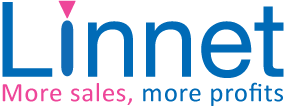To buy commercial software or to make an application specially designed for my business or company?
In other words, which is better for me: commercial software or custom-made software?
Undoubtedly, this is a question of a financial nature, as a company must be an attractive business in order to last and continue to generate value for society.
So the answer is simple: Whichever option generates more savings and profits for the company.
However, calculating the ROI of each option may not be so straightforward. Here are three key aspects to help you make the best decision.
Opportunity cost of technology adoption.
Commercial software applications or programs are designed to meet a generalised need. If the intended process is a general process, for example, accounting for a business that is a standardised practice with internationally accepted rules and principles, then it may be quite reasonable to opt for a commercially available programme.
On the other hand, if the operation of your business or company is very distinctive or different from others, then it is unlikely that a commercial software will be adapted to the operation of the company. And this is where the greatest conflict can occur when trying to adapt the organisation to the technology, as not only will productivity be diminished, but the solution can be half-baked and the opportunity cost can become substantial due to the time wasted in running a programme that eventually has to be discarded.
Opportunity cost in market leadership.
Nowadays there is tremendous competition in the market for any service or product. Is it possible to stay in the market without innovating or improving? It would seem that the answer is a resounding no.
For this reason, another very important aspect is to consider the opportunity to innovate with the new software programme to be implemented. For example, a customised e-commerce application can innovate not only the sales process, but also the production and even the business model.
Consideration should also be given to the possibility of scaling the business through the software solution and thus enhancing territorial expansion or growth into new market niches.
A commercial programme can hardly be adapted to the innovation strategy of the companies and therefore, considering a software programme designed according to the innovation strategy of the company is much more feasible.
Return on investment.
Finally, the technology must ensure an attractive return on investment for the business. The time, people, problems and risks of the current processes in the business operation represent potential savings that the new business software or custom application can provide.
It is recommended that the software solution should provide an attractive ROI on savings alone.
Investing in your own business is your best investment.
Adding all these factors together, the total business benefits that the new technology solution brings can be known and by comparing this information against the cost of the commercial software and the cost of the customised application, the ROI of both solutions can be compared to choose the best alternative.
Of course, the investment capacity of the company will be a financial constraint that has to be weighed up. But such is the importance of innovation that 4 or 5 of the 15 points in the questionnaire of Philip Fisher (1), a famous investor and author in the financial area, deal with innovation and the investment that the company must make in order to develop new business opportunities.
At Linnet we believe that the best investment is the one you make in your own business or company. To prove it, we compared the average return of the last 10 years in different investment instruments in Mexico and we were able to corroborate that the ROI obtained in a couple of software projects tailored to a company obtained much higher returns:
It is important to note that the returns of approximately 140% and 80% of the “Logistics App” and “Ordering App” (2), are due to savings in the operation of the business alone. It remains to add the gains from an average monthly increase in sales of 40%. Plus the ability to now be able to replicate the production operation to other territories.
NOTE: For the performance of Siefore Básica 4, the average over the last 5 years was taken. For all other indices, the average over the last 10 years was calculated.
Bibliography:
1) Fisher, Philip A. Common Stocks and Uncommon Profits and Other Writings (Wiley Investment Classics) (p. 280). Wiley. Kindle Edition.
2) Contact Linnet for more detail on the applications and calculations presented.
Image credits:
https://upload.wikimedia.org/wikipedia/commons/6/66/Boxing_Day_at_the_Toronto_Eaton_Centre.jpg
from Toronto, Canada [CC BY 2.0 (https://creativecommons.org/licenses/by/2.0)]
